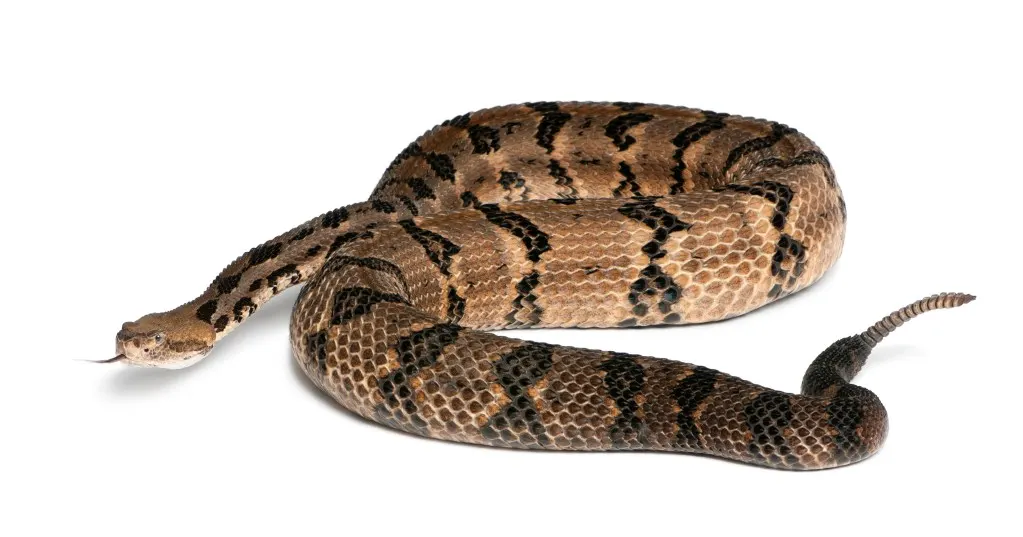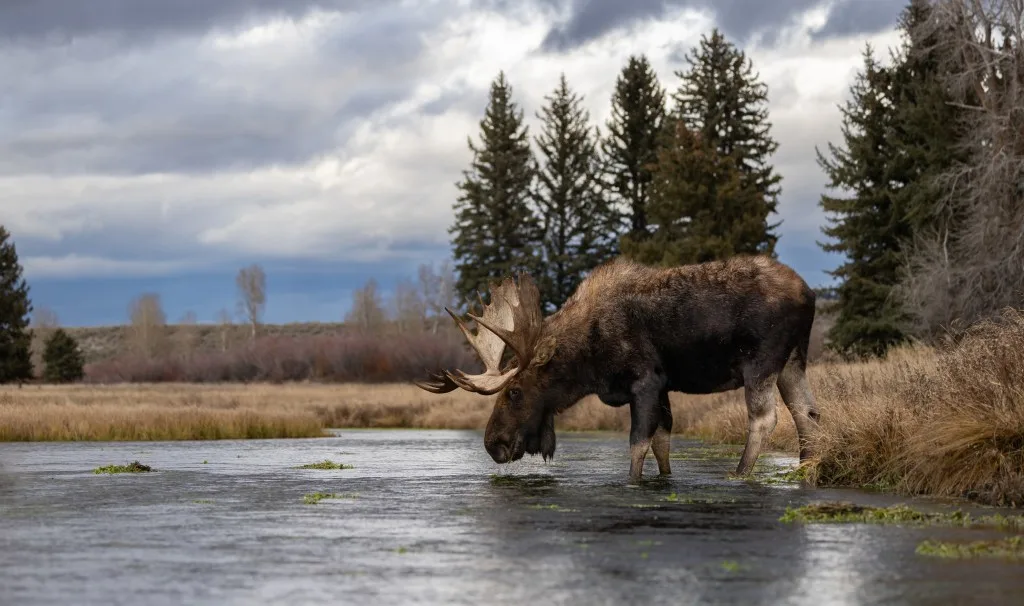A beautiful lake in the northeast is a popular destination for those who love aquatic adventures. While these adventurers may enjoy cooling off and splashing around in the waters, they can’t do so without fear. Lake Champlain has some dangerous creatures lurking in the waters and the land surrounding it.
Today, we will share the most dangerous creatures in and around Lake Champlain. If you’re not careful, you could have a dangerous encounter with one of these creatures. Let’s get started!
Where Is Lake Champlain?
Lake Champlain sits in the northeast portion of the country and divides the northern portions of New York and Vermont. A portion of the lake lies north of the border in Canada. It’s the sixth largest lake in the country and is home to more than 80 islands throughout the lake. If you dream of living on an island, you may want to consider one of the four island towns on Lake Champlain.
What Is Lake Champlain Known For?
Lake Champlain has a reputation for being a great place to swim, fish, and boat. It has more than 80 varieties of fish species and more than 300 species of birds. It’s a wildlife lover’s paradise! However, it’s not these creatures that people are worried about.
Scientists discovered the oldest known fossil reef in the world in the lake, and some believe there may still be a dinosaur or two lurking in the waters. However, the lake’s popularity is mostly due to the many small towns surrounding the lake. Visitors flocked to these towns for easy access to the lake to cool off and enjoy some aquatic fun during the summer.
Pro Tip: Cool off while swimming in the Cleanest Lake in America.

Are There Lake Monsters in Lake Champlain?
As we stated earlier, scientists discovered the oldest known fossil reef in the world in Lake Champlain. There’s a legend of a plesiosaur dinosaur, Champ, still swimming around in the waters to this day. He’s an elusive creature, similar to the Loch Ness Monster, that many have claimed to see while swimming in the lake.
The legend of Champ has been passed down from generation to generation. It’s a fun legend that causes many to think twice about stepping into these deep waters. We’ll leave it up to you to decide whether or not you think Champ is for real. However, going on a hunt to spot him can make for a fun and exciting trip.
Most Dangerous Creatures Around Lake Champlain
Aside from the mythical ancient dinosaur we’ve discussed, there are some dangerous creatures around Lake Champlain. You must watch for these creatures, or they could ruin your day and trip to Lake Champlain.
Lampreys
Lampreys are a parasite that feeds off other fish. Their suction-like mouths contain many tiny teeth that are incredibly sharp. They’ll use these teeth to attach to fish and ultimately drain the fish of blood. While lampreys feed on fish, they occasionally attach to humans when they’re incredibly hungry.
Removing a lamprey attached to you is best done by using fire. However, you can also convince them to let go by removing them from the water. This makes it impossible for them to breathe, and they’ll typically let go.
The lampreys in Lake Champlain won’t kill a human, but their bite can be incredibly painful. Thoroughly clean the wound as soon as possible to avoid any potential infections. If left untreated, their bites can get infected and cause life-threatening infections.
Timber Rattlesnakes
You may think rattlesnakes are only a threat in the desert landscapes out west, but that’s not true. The timber rattlesnake is a venomous snake averaging 3 feet to 4 feet in length that lives throughout the eastern portion of the country, including around Lake Champlain.
These creatures slither through the thick vegetation looking for food and shelter. While they’re not typically an aggressive species of rattlesnake, they will strike if you step on them or attempt to pick them up. Watch your step, especially if you venture off a trail. If bitten, remain as calm as possible and immediately seek medical assistance.

Bats
If you hate getting eaten alive during summer by mosquitos, you’ll love bats. They come out at night and decimate a tremendous amount of mosquitos. However, while they may reduce the number of mosquitos buzzing around you, their saliva and feces can often contain rabies and other dangerous bacteria. You may want them around your house, but not inside of it.
If you’ve encountered a bat, you should wash any potentially infected areas and seek medical attention as soon as possible. Capture the bat if you can safely do so. Medical professionals can test the bat to see whether or not it has rabies. If it does, they’ll need to start you on treatments as soon as possible.
Black Bears
Black bears are the second largest animal around Lake Champlain. While attacks may be rare, they can be very serious when they do occur. Black bears often do their best to avoid humans, but encounters still occur. These powerful creatures can weigh up to 600 pounds and sprint 30 miles per hour. If that’s not enough, they also have large claws that allow them to scale trees quickly and are strong swimmers.
You’re most likely to encounter black bears in the morning and evening. If you do encounter a black bear, avoid making any quick movements. You want to avoid causing the bear to feel threatened, especially if a cub is nearby. Back away slowly from the bear to avoid escalating the situation.
If the bear begins acting aggressively towards you, make yourself appear as large as possible. Use a deep, loud voice to make yourself big. Spread out to make yourselves seem larger if you’re in a group. Only use bear spray once the bear begins to charge at you. If the bear follows you while you retreat, continue to walk and speak loudly.
Unfortunately, once a black bear comes in contact with you, you must fight back. Use sticks, rocks, and anything you can to protect yourself. You must fight with everything you have – you’re fighting for your life! Once you escape the bear encounter, report it to local authorities as soon as possible.
Moose
Moose in this neck of the woods can range from 600 pounds to 1200 pounds and stand 6 feet tall at their shoulders. However, despite their massive size, they can move throughout the wilderness in near silence. When needed, a moose can run upwards of 35 miles per hour.
While you may not be able to outrun a moose, you can use a few tactics to separate yourself from the moose. Use trees to your advantage. Climb a tree or squeeze between trees where a moose can’t fit. If your vehicle is nearby, climb into it. You’d rather file an insurance claim than get trampled by a moose.
Pro Tip: Lake Champlain has some creepy creatures lurking beneath its waters, but what is The Deadliest Lake in America? Find out!

What Invasive Species Are in Lake Champlain?
According to the Lake Champlain Basin Program, more than 50 known invasive species live in Lake Champlain. However, there are several that the group classifies as being their highest priority. These include the Alewife, Asian claim, Eurasian Watermilfoil, Japanese Knotweed, Purple Loosestrife, Water Chestnut, and Zebra Mussels.
Invasive species can destroy the natural environment of a particular area. Maintaining the ecosystem for the plants and animals that call it home is extremely important. Invasive species can take over an ecosystem and make it difficult for native species to thrive or exist.
Can You Swim in Lake Champlain?
Lake Champlain has more than 550 miles of shoreline. You’ll find more than 50 public beaches all around the lake, with hundreds of swimming holes in the rivers and streams that make up the Basin.
The water in Lake Champlain is typically safe to swim, but swimmers and anyone getting in the water should be mindful of the water quality and be aware of any potential threats. Blue-green algae exist in the lake and can cause health conditions.
Watch Out For Lake Champlain’s Dangerous Creatures
The area around Lake Champlain is beautiful and has the potential for some fantastic adventures. However, don’t let your guard down while you’re out there. Be on the lookout for the dangerous creatures we’ve discussed so you and your loved ones can stay safe. Take the proper precautions to carry the necessary items to protect yourself, and you’re sure to have an amazing time on Lake Champlain.
Would you dare to swim amongst the dangerous creatures in Lake Champlain? Tell us in the comments!
Discover the Best Free Camping Across the USA
To be honest with you, we hate paying for camping. There are so many free campsites in America (with complete privacy).
You should give it a try!
As a matter of fact, these free campsites are yours. Every time you pay federal taxes, you’re contributing to these lands.
Become a FREE CAMPING INSIDER and join the 100,000 campers that love to score the best site!
We’ll send you the 50 Best Free Campsites in the USA (one per state). Access the list by submitting your email below: